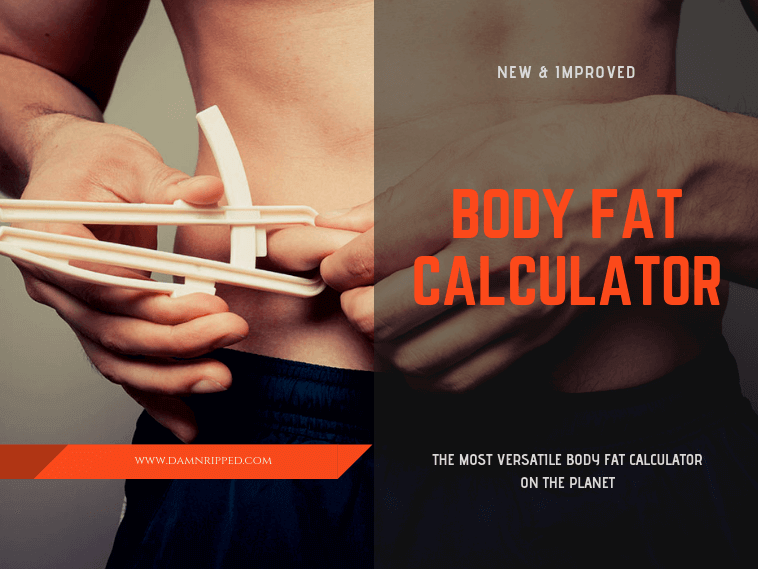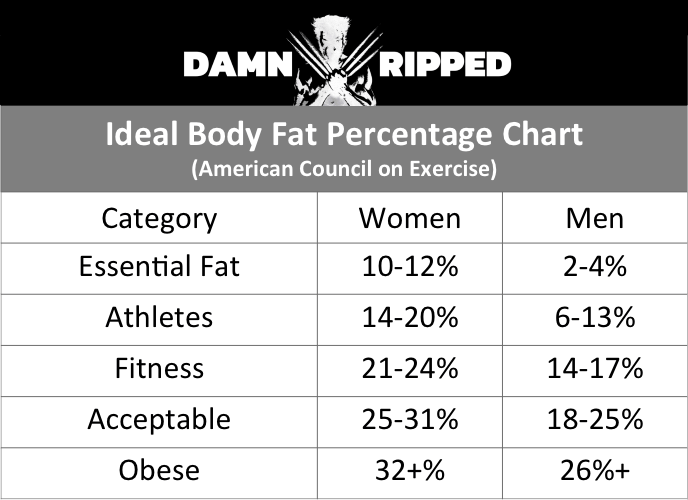Wouldn’t it be nice to be able to determine your body fat percentage without the use of expensive scales, special devices, or a visit to the doctor? Well, there is a way and it can be done with only a little bit of measurements of your body. Scientists and fitness experts have developed several empirical formulas which can be used to estimate a person’s body fat percentage using a tape measure in lieu of directly measuring it. Even though these methods aren’t as accurate as a water displacement test (hydrostatic) or the “bod pod”, they are still a good estimate of body fat percentage. They typically only have an error of +/-3%.
So we’ve developed a calculator with incredible accuracy w.r.t. the formulas and that’s not even the best part, the best part is; this calculator can calculate your body fat % using both Measuring Tape and Body Fat Caliper methods and has close to 13 formulas in total. Yes! That’s right, now you get to know your body fat % through every single formula known to mankind. And here I introduce the much awaited and requested Body Fat Calculator.
But first, let me give you a primer on both methods- so that you can get a pretty good idea about them before using the calculator.
Devices Needed: You should have at least a Body Fat Caliper or a Body Tape Measure to successfully calculate your Body Fat %. If you don’t have either you should definitely think about investing in one or the other. I’ll provide you with the amazon links for both so that you don’t have to go through the hassle of searching for them.
Formulas Included
Body Fat Caliper:
- Jackson/Pollock 3 Caliper Method
- Jackson/Pollock 4 Caliper Method
- Jackson/Pollock 7 Caliper Method
- Parillo Caliper Method
- Durnin/Womersley Caliper Method
- Sloan Equation
- Yuhasz Equation
- Yuhasz Equation (NHL Draft Testing)
Measuring Tape:
- Covert Bailey Method
- Dept. of Defense/Navy Method
- Heritage BMI to Body Fat Method
- YMCA Method
- Modified YMCA Method
#1 – Body Fat Caliper: Skin Fold Method
The “skin fold” method measures your body fat percentage by pinching your fat with your fingers then measuring the thickness with a body fat caliper. The reading is given in millimeters, which you compare to a chart with age and gender to arrive at your body fat percentage. There are many different types of caliper tests, which range from only one site like with the A to a 7 site Jackson Pollack Method (some are as high as 12 sites).
Perks:
- Accurate
- Dependable (when skilled at measuring)
- Repeatable
- DIY compatible (3-site)
Bottom Line
Skin Fold is hands down the most effective, accurate, practical method to measure and track your body fat percentage. The self-administered Accumeasure Body Fat Caliper retails for under $10 and is sufficient for most people.
Tips for Using Body Fat Calipers:
- For greater accuracy, monitor changes with skinfold measurements rather than converting them into a body fat percentage and using that to judge progress.
- Have an experienced examiner test you if possible. At the very least have the same person test you each time.
- If you want to test yourself the only viable option at the moment are Accumeasure body fat calipers. Do not, I repeat do not splash out on quality calipers if you only intend to test yourself.
- Take the reading within 4 seconds of applying the body fat calipers to the skinfold. A prolonged delay has been shown to significantly underestimate the actual skinfold value.
- Take measurements at the same time of day for each test.
- Don’t have a test immediately after exercising.
- Last but not the least, Use body fat calipers to measure progress only, if possible.
#2 – Measuring Tape Method
This tape-measure is usually quite accurate – so if a man got 17 percent from this test, he could expect his true percent body fat to be anywhere between 15 and 19 percent.
For some people, however, the results of the tape measure test may not come so close to their true percent body fat. People who are very, very fit can get numbers 3 to 5 percent higher than their true percent body fat. Because they don’t have a lot of fat inside their muscles, very fit people may be lower in body fat than this tape measure test indicates.
Conversely, if a person is skinny but not fit, this body fat test may yield a number 3 to 5 percent lower than his or her true percent body fat. Though they look thin, unfit skinny people really have more than the usual amount of fat inside their muscles, which you can’t see from the outside.
So, what’s the bottom line? For many, this tape measure test is quite accurate, it puts you in control, it can be done frequently and it costs nothing (as is the caliper method).
The most valuable aspect is that you can test yourself and you can see change over time. At the moment viable option is MyoTape Body Tape Measure.
Tips for Using Measuring Tape:
Care should be taken to ensure that your measurements are taken accurately. This will help to ensure that the calculator compute in the most accurate estimate of body fat percentage that is possible.
- Do not use a measuring tape that is old or stretched out.
- All measurements should be taken when the body is in a relaxed state.
- Multiple measurements should be taken and then averaged to avoid creating a large error.
- Measurements should be taken in the morning after having a full night’s rest
- Unless otherwise noted, measurements should be taken at the widest point of their specific area.
Which Method is Best?
It must be noted that no empirical formula is perfect. In reality, there are many more variables that affect body fat percentage then just the simple things that are being measured for these equations. For me, when I used the measuring tape, the most accurate method was the Modified YMCA Method. However, most people will likely tell you that the Department of Defense/Navy or the YMCA methods are the most accurate. Yet others swear by Covert Bailey’s formula. And when I used the Body Fat Calipers, the most accurate was the Jackson/Pollock 7 Caliper Method. However, most people will likely tell you that the Parrillo Caliper Method is the most accurate.
Personally, I like to try all the formulas and see what the average value and the range is. Based on that information, I can get a pretty good idea of what my body fat percentage really is. Keep in mind that all of these formulas, like anything else, has some general limitations:
- These equations are generally not applicable for children or those under the age of 18
- These equations may incorrectly calculate body fat percentages for the elderly, sick, and highly athletic
Again, the most important thing is to stick to one method. Be it using Calipers or Tape, just stick to one and don’t mix things up.
Measuring Sites
Please drag the slider on the below image to the Left to view Women’s Measuring Sites and to the Right to view Men’s Measuring Sites
For a detailed guide on how to measure at various sites, please click here.
Rate Us
Also, we strongly believe “a word of mouth” is the best mode of advertising there is. So please spread the word about our calculators and share them with your friends and family. Thank you.



